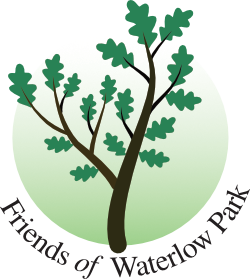Compost bins have been constructed to enable the Park to recycle green waste collected by the gardeners and turn it into compost.
This have a number of benefits:
- Produce high quality compost to be used on the beds and borders in the Park;
- Reduce the carbon footprint by not having to drive waste to depots or collect compost;
- Increases the amount of time the gardeners can spend doing gardening duties instead of ferrying waste and compost;
- Aids wildlife as a number of insects and amphibians overwinter in the warmth of the compost while providing an extra food source for birds;
- Provide a useful educational tool for teachers and parents explaining recycling life cycles and the food chain to children;
- Will eventually save money that can be better spent In improvement projects in the Park.
Creating compost
There are two methods of composting: hot and cool composting.
Cool composting is just piling up waste and leaving it for two or three years to break down. The advantage of this is that it’s less time consuming. The disadvantage is that there are still seeds and perennial weed roots left in the residue that can spring to life the moment the compost is spread. It also requires more space because the process takes so long.
The method being used on the Park however is hot composting, generally preferred by horticulturists. This requires more management to balance nitrogenous waste such as grass cuttings, with lignified waste such as woody prunings and shredded dried leaves. Layers of soil are used with the green waste. This is to allow organisms to transfer into the plant waste and do their job of transforming the waste into compost. It’s the organisms that generate the heat and in so doing destroy the seeds that might lurk in the heap. Heat is an essential part of the process so needs to be trapped in the heap. This is usually done by covering the pile with a heat-retaining membrane. It takes six months to create compost by this method.
What lives in compost?
If the bins are close enough to water, both frogs and newts will snuggle down in them during the winter. The compost heaps also provide a source of food for these amphibians such as slugs, snails and worms that populate the new waste on top. Lots of different species of beetles which are growing increasingly rare, live in compost heaps as do centipedes and (harmless) grass snakes. Some of the insects provide an extra food source for birds.
Some common myths about compost bins:
Q: Will it smell?
A: No, it only smells if the balance of materials is wrong and too much grass clippings are put onto it without balancing it with other plant materials such as leaves or plant waste.
Q: Will it attract rats?
A: No. Rats are not attracted to garden waste unless it includes kitchen waste. So leaving litter around the park is attractive to rats, but composting fresh plant waste is not.
Q: Won’t it encourage slugs and snails that will go on to eat the flowers and vegetables growing in the Park?
A: Compost does attract slugs and snails. Both are essential to the composting process. But many of the varieties that live on compost heaps only live on rotting plant waste. However, it is possible that they will transfer to the plant beds and borders so the bins have been sited as far away from these as possible. They also make a tasty dinner for frogs and newts. Compost also attracts worms that are important in keeping soil in good condition.
Find out how to make good compost from our downloadable guide.
